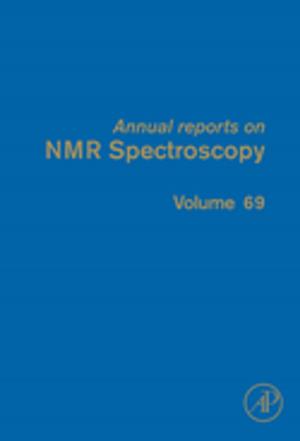Microfluidic Cell Culture Systems
Nonfiction, Science & Nature, Science, Other Sciences, Nanostructures, Technology, Nanotechnology| Author: | ISBN: | 9780128136720 | |
| Publisher: | Elsevier Science | Publication: | September 12, 2018 |
| Imprint: | Elsevier | Language: | English |
| Author: | |
| ISBN: | 9780128136720 |
| Publisher: | Elsevier Science |
| Publication: | September 12, 2018 |
| Imprint: | Elsevier |
| Language: | English |
Techniques for microfabricating intricate microfluidic structures that mimic the microenvironment of tissues and organs, combined with the development of biomaterials with carefully engineered surface properties, have enabled new paradigms in and cell culture-based models for human diseases. The dimensions of surface features and fluidic channels made accessible by these techniques are well-suited to the size scale of biological cells. Microfluidic Cell Culture Systems applies design and experimental techniques used in in microfluidics, and cell culture technologies to organ-on-chip systems.
This book is intended to serve as a professional reference, providing a practical guide to design and fabrication of microfluidic systems and biomaterials for use in cell culture systems and human organ models. The book covers topics ranging from academic first principles of microfluidic design, to clinical translation strategies for cell culture protocols. The goal is to help professionals coming from an engineering background to adapt their expertise for use in cell culture and organ models applications, and likewise to help biologists to design and employ microfluidic technologies in their cell culture systems.
This 2nd edition contains new material that strengthens the focus on in vitro models useful for drug discovery and development. One new chapter reviews liver organ models from an industry perspective, while others cover new technologies for scaling these models and for multi-organ systems. Other new chapters highlight the development of organ models and systems for specific applications in disease modeling and drug safety. Previous chapters have been revised to reflect the latest advances.
- Provides design and operation methodology for microfluidic and microfabricated materials and devices for organ-on-chip disease and safety models. This is a rapidly expanding field that will continue to grow along with advances in cell biology and microfluidics technologies.
- Comprehensively covers strategies and techniques ranging from academic first principles to industrial scale-up approaches. Readers will gain insight into cell-material interactions, microfluidic flow, and design principles.
- Offers three fundamental types of information: 1) design principles, 2) operation techniques, and 3) background information/perspectives. The book is carefully designed to strike a balance between these three areas, so it will be of use to a broad range of readers with different technical interests and educational levels.
Techniques for microfabricating intricate microfluidic structures that mimic the microenvironment of tissues and organs, combined with the development of biomaterials with carefully engineered surface properties, have enabled new paradigms in and cell culture-based models for human diseases. The dimensions of surface features and fluidic channels made accessible by these techniques are well-suited to the size scale of biological cells. Microfluidic Cell Culture Systems applies design and experimental techniques used in in microfluidics, and cell culture technologies to organ-on-chip systems.
This book is intended to serve as a professional reference, providing a practical guide to design and fabrication of microfluidic systems and biomaterials for use in cell culture systems and human organ models. The book covers topics ranging from academic first principles of microfluidic design, to clinical translation strategies for cell culture protocols. The goal is to help professionals coming from an engineering background to adapt their expertise for use in cell culture and organ models applications, and likewise to help biologists to design and employ microfluidic technologies in their cell culture systems.
This 2nd edition contains new material that strengthens the focus on in vitro models useful for drug discovery and development. One new chapter reviews liver organ models from an industry perspective, while others cover new technologies for scaling these models and for multi-organ systems. Other new chapters highlight the development of organ models and systems for specific applications in disease modeling and drug safety. Previous chapters have been revised to reflect the latest advances.
- Provides design and operation methodology for microfluidic and microfabricated materials and devices for organ-on-chip disease and safety models. This is a rapidly expanding field that will continue to grow along with advances in cell biology and microfluidics technologies.
- Comprehensively covers strategies and techniques ranging from academic first principles to industrial scale-up approaches. Readers will gain insight into cell-material interactions, microfluidic flow, and design principles.
- Offers three fundamental types of information: 1) design principles, 2) operation techniques, and 3) background information/perspectives. The book is carefully designed to strike a balance between these three areas, so it will be of use to a broad range of readers with different technical interests and educational levels.















